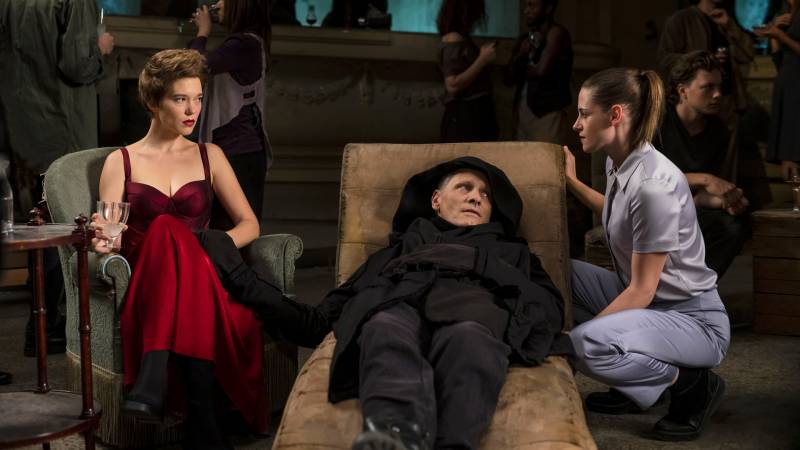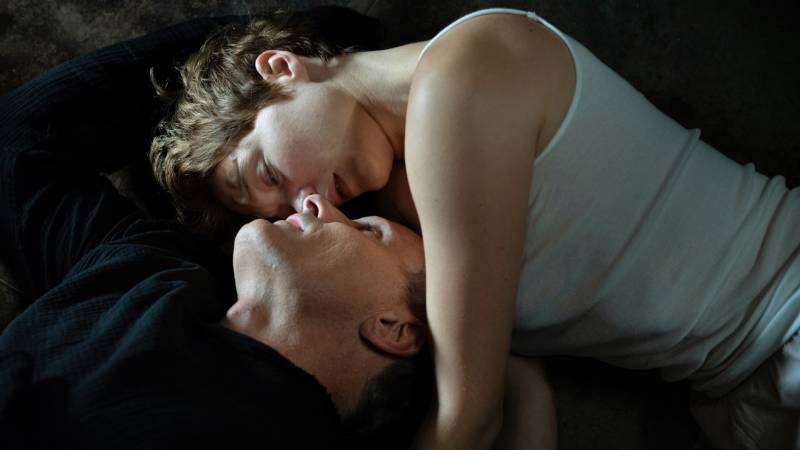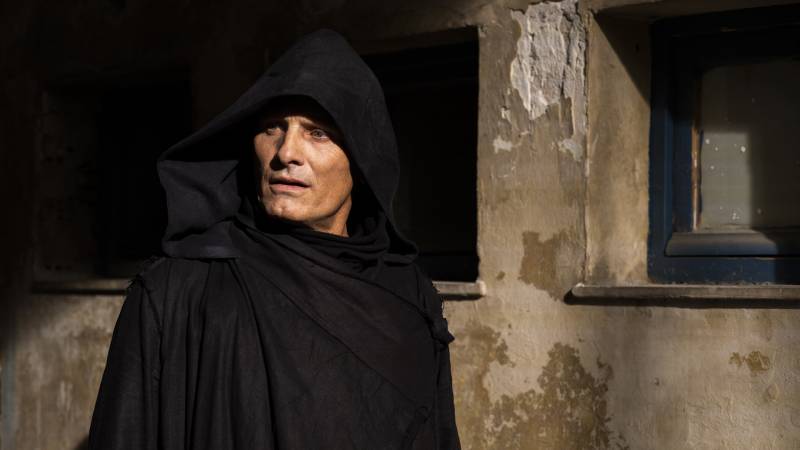There’s a chilling lack of oxygen in David Cronenberg’s new film Crimes of the Future. The director of The Fly (1986) and Naked Lunch (1991) places the actors in a series of tomblike airless rooms. There are no windows because, in this vision of the future, no view is worth taking in. Sunshine blinds rather than warms the souls of these seaside residents. Every interior wall is rotting and worn down. The ocean is a corrosive force advancing the city’s turn to decay. It’s as if Cronenberg has, with his characteristic morbidity, created the visual equivalent of Albert Camus’ city of Oran, from the 1947 novel The Plague.
Saul (Viggo Mortensen), the director’s antihero, gasps for breath while he’s sleeping, while he’s talking, while he’s walking and while he’s eating. The relentlessness of his unnamed illness suggests that an enlightened era of medical cures is far behind us. To ease his body’s stressors, ghoulish, partially organic machines wrap themselves around Saul’s body. To help him eat, Cronenberg has reimagined a baby’s high chair as a skull-less, fleshy skeleton that rocks and spoon feeds Saul mush. His bed-cum-cradle, suspended from the ceiling, resembles an extracted uterus.

(Courtesy NEON)
Saul lives with the pristinely dressed Caprice (Léa Seydoux), who was a surgeon in a former life. Their relationship may contain elements of love and affection but they primarily work together as performance artists. In this universe, performance artists are idolized, the way that actors and reality stars are today. Each member of the audience brings their own camera to the show, to film every second, the director implies, so they can titillate their erogenous zones when they get back home. Largely unable to interact with each other, the crowd represents an exhausted collective unconscious that feels familiar. Is this the inevitable future that comes from obsessively archiving our experiences, instantly and infinitely, draining them of any meaning?
In this nightmare realm, connection is only possible through pain. People “hook up” in public places with actual hooks. Cronenberg films multiple close-ups of background characters slicing into each other’s skins followed by orgasmic reaction shots. What separates Saul and Caprice from these ordinary citizens is their approach to surgery. Saul is a kind of mutant. He’s evolved with the ability to grow what are essentially vestigial organs.
Their performances, and others we see by their peers, are atrocity exhibitions. Cronenberg has been documenting our moral decline from the equally surgical Dead Ringers (1988) to his more recent Maps of the Stars (2014). But Crimes of the Future suggests that the decline is behind us. The characters are suffering through the aftermath, where the psychic shrapnel of despair has permanently dislodged humane codes of shared conduct.

Cronenberg would like the audience to compare Saul’s mutations to the work of an artist. In particular to that of the director’s. Crimes of the Future is a portrait of an artist as an old man. Saul’s organ-birthing process—like a filmmaker inventing an alternate future—is straining his body. All the physical pleasures from the past now cause pain.




